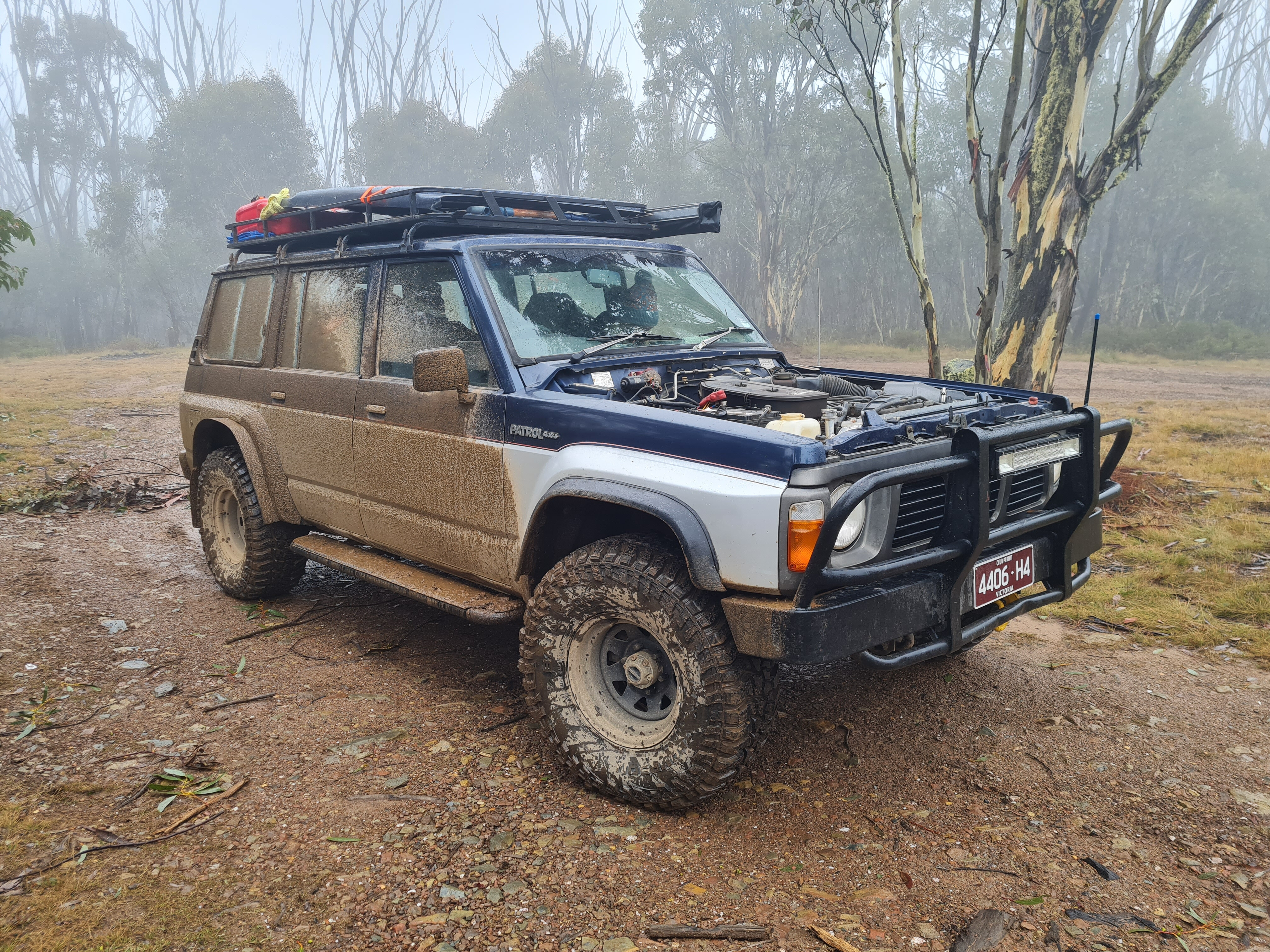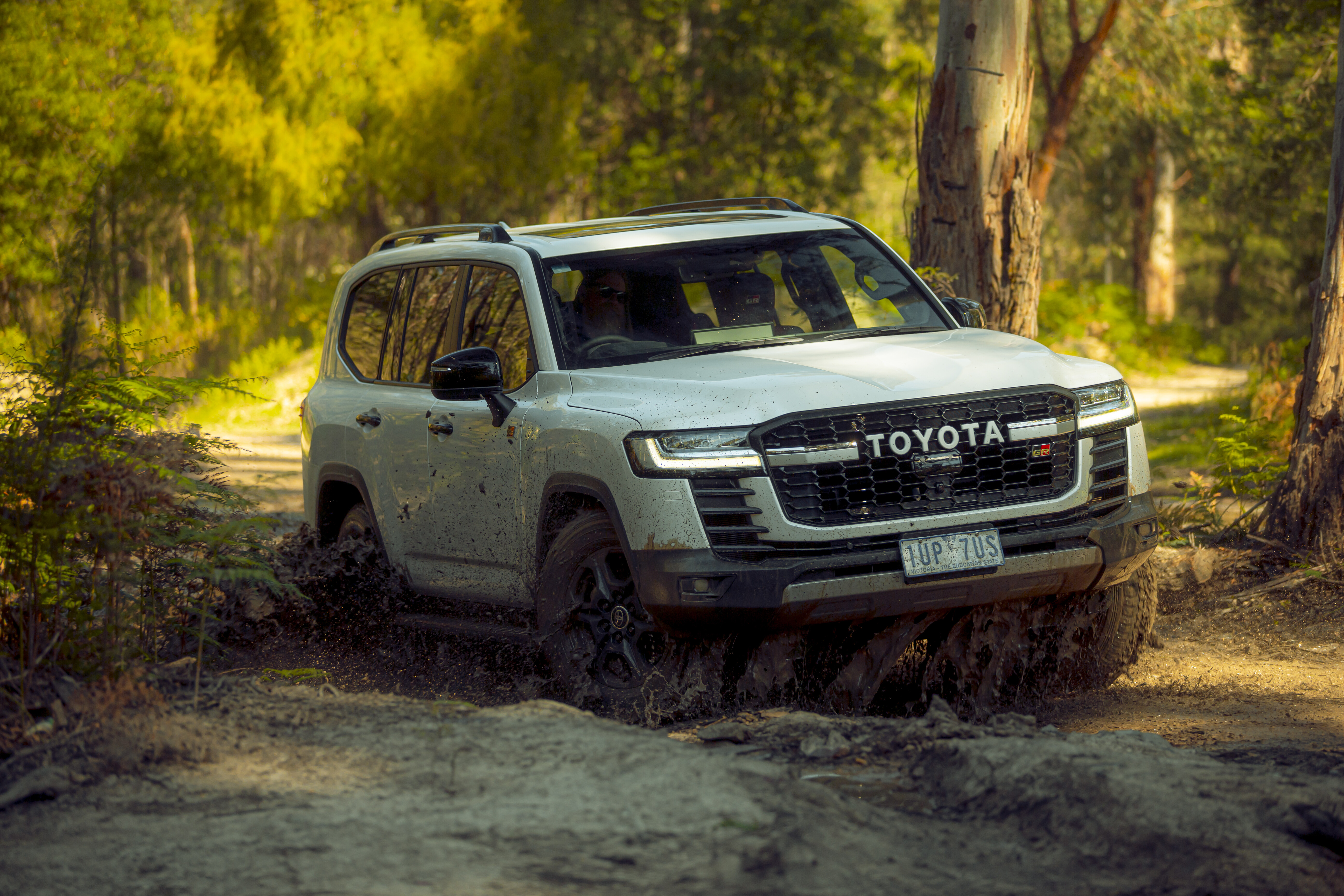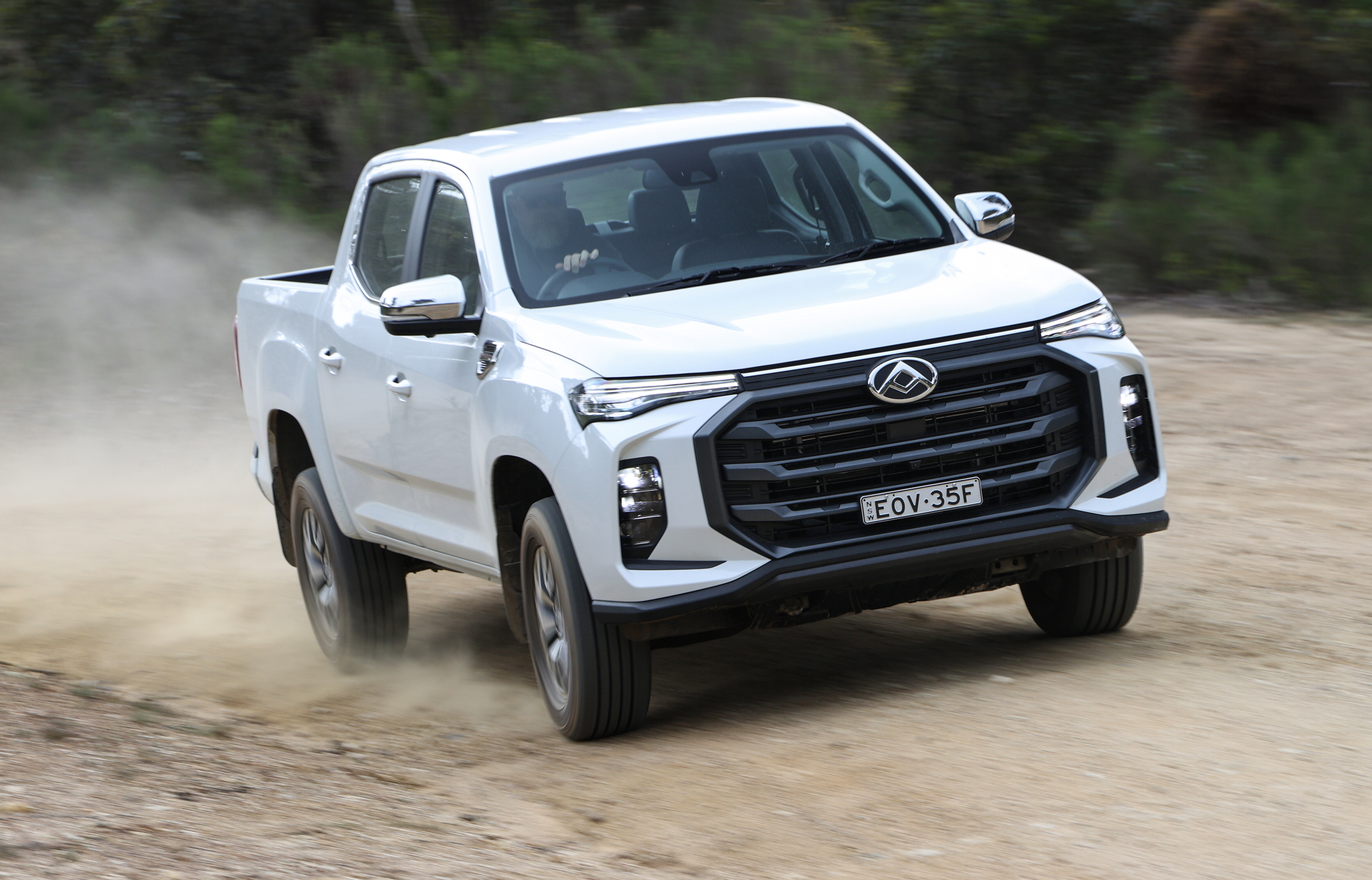RATHER than cry into our beers over the loss of a diesel-fueled Nissan Patrol, we’ve taken the bull by the horns and saddled up the Y62 Patrol for a Cape York adventure.
The petrol-only Y62 V8 is the sole Patrol left on the Australian market, and it initially received a lukewarm reception when launched back in 2013. It looks like a bloated X-Trail, there’s no diesel engine option and, when launched, it was a little pricey.
However, there has been a significant price drop since its launch, as well as a realignment of the model range. We wanted to see how a completely stock Y62 Patrol would handle one of this country’s most iconic trips, so we headed to Cape York to tackle the Old Telegraph Track and onwards to the tip of Australia.
The V8 Patrol is often written-off by many as a 4×4 tourer because of its preference for premium unleaded fuel and its thirst for the stuff. Y62 owners are a delicate lot, and they get a bit cranky if you point out just how prodigious a thirst this baby can have.
Around town, when driven unsympathetically,it drinks like there’s no tomorrow, and we managed to hit 30.0L/100km at one stage. Admittedly, this was due to driving with the sunroof open and listening to the glorious engine note of that naturally aspirated 300kW/560Nm bent-eight under acceleration.
Nissan’s 5.6-litre VK56VD VVEL mill is a beautiful bit of machinery. It comes from the same engine family as the engine used in the Nissan V8 Supercar (the American-built VK56DE, which is also E10 fuel-friendly). VVEL stands for Variable Valve Event and Lift system, which allegedly helps with fuel economy and performance especially under wide-open throttle.
It’s an all-alloy 32-valve twin-cam engine that uses direct injection to get petrol to the pistons; it’s smooth, powerful and a lot of fun. There’s also the added benefit of this Patrol being quite reasonably priced considering the amount of kit it offers, and it’s a lot cheaper than its big diesel wagon rivals.
A 200 Series Land Cruiser VX diesel (its closest rival in terms of options) has a price of $99,170 – even opting for Toyota’s 4.6-litre petrol V8 only drops the price to $94,070. The eight-seater Patrol Ti you see here drives away for $78,393, and you can buy a lot of juice for that price difference.
Maybe in this new Euro 5 environment, the case for shelling out a premium price for a diesel fourbie isn’t quite as compelling as it used to be? The thing about Cape York is that, unless you live in Cairns, it’s a big drive from anywhere. So, with a full load of camping gear in the back, we pointed the big wagon north and rolled out of Brisbane.
As a mile-eater, the Patrol is awesome; it cruises effortlessly on the open road and is impressively comfortable, plus having 300kW on tap made for effortless cruising and overtaking. Open road fuel average to Cairns was a respectable 12.5L/100km.
Cairns proved to be the last time the Patrol was going to see PULP for more than a week, so with the 140-litre tank full to the brim, we pointed it over the Great Dividing Range and beyond to the Peninsula Development Road. Many bemoan the drive to the Cape isn’t the adventure it used to be, which is easy to say unless you have to live there.
The PDR can be corrugated, but it’s wide, has plenty of sealed sections these days and, with a bit of care, you could do it in a two-wheel drive hatchback. It’s on the PDR where one of the Patrol’s best assets shines through.
The Nissan uses a Hydraulic Motion Body Control (HBMC) suspension system – the coil-sprung independent suspension feeds hydraulic fluid to remote accumulators mounted between the front and rear axles. This allows the system to direct more hydraulic pressure to the wheels that are under the most pressure.
On the road, this makes for flatter cornering at speed and virtually no bodyroll. The big wagon just floats over the gravel at speed and provides an impressive ride with sensational handling. The Bramwell Junction Roadhouse is a last chance for a coffee and fuel before tackling the OTT.
The poor, old stock Patrol looked a little goofy alongside the barred-out and lifted Cruisers, utes and old-school Y61 Patrols. However, it turned out that Palm Creek, the first major obstacle on the track, was going to be too much for a stock Patrol with no winch and only one load-rated tow point at the rear.
As it was early in the season there was still plenty of mud and water around – and plenty of traffic. An attempt to get close saw the rear of the Nissan come into contact with the ground – there wasn’t even a tow bar to protect it – which popped the entire bumper panel out from the body on the right-hand side.
Some duct tape and zip-ties neatened up the panel so we could keep on moving. After collecting a wallaby on the front RHS near Coen on the PDR, the Nissan was starting to look a little bedraggled. However, these hits pointed out the importance of a good body protection when out in the back blocks.
Damage on our minds, we elected to head up Bamaga Road and take the Gunshot Bypass track to the OTT and then head south back to the creek and turn around – this way we’d still do the bulk of the track. Gunshot Creek is famous for its nosedive crossing so, with visions of dropping over the edge of Gunshot, hitting the bottom with the nose and the airbags going off, we took the chicken track.
The Patrol was in its element rolling north through sandy heathland, and it tackled the various creek crossings and fords with aplomb. The HBMC system came into its own here, too. It tries to emulate the performance of a live axle off-roader by pushing the wheel that is off the ground down to full stretch.
For double wishbone independent suspension, the Patrol does have pretty impressive articulation. There was plenty of water around, which meant the Patrol’s 700mm wading depth and 287mm ground clearance were put to the test a couple of times. The engine breathes through a sensibly located intake high up on the left-hand front ’guard.
Unlike competing vehicles, it’s not easy to modify the HBMC suspension and, given its performance on- and off-road, I can’t really see a reason to muck around with it anyway. However, the aftermarket caters for some extra lift to the HBMC system by using custom lower control arms.
THAT ENGINE! SOME smaller capacity modern petrol engines rely on sequential turbocharging to try and create a diesel-like torque curve. This naturally aspirated Nissan engine, however, isn’t one of them.
We wouldn’t go so far as to call it old school, but peak torque is at 4000rpm and peak power at 5800rpm, and we’d be lying if we said it didn’t sound awesome as we scrabbled out of Cockatoo Creek. Having all that power on tap means, for the most part, you rarely have to wring its neck.
The last ford before Nolan’s Brook was the deepest we encountered and it saw the Patrol float a little at the rear as the front wheels clawed at the creek bed. We can confirm the Patrol’s door seals work well. Off-road antics saw fuel consumption rise a little but not as much as expected, averaging 13.8L/100km – the worst fuel figure for the entire 6497km trip.
A steady diet of regular unleaded only took a little edge off the performance of the Nissan once north of the Jardine River, but this kind of rough road touring is right up the Patrol’s alley. The big fuel tank meant range wasn’t an issue at all on this route.
From Bamaga we took the track through Roma Flats and got bogged (photographer’s fault), before triumphantly parking the Patrol on the beach near the tip. There are plenty of reasons to hang on to the diesel for those out bush, but for everyone else the case for buying an oil-burner starts to look a little less attractive.
On many vehicles there’s a premium price for ticking the diesel box at purchase, and there’s also the premium price paid for servicing. In some parts of the country, you’ll even pay more at the pump for diesel. And now there’s added complexity that has the potential to tarnish a diesel’s reputation for reliability and durability.
We’re not talking about your old 1HZ Land Cruisers and TD42 Patrols that have done a million kays and are still ticking over, but brand new vehicles on the market. With those factors in mind, we reckon opting for petrol power could be a compelling case in the future, particularly if you don’t live in town and commute in the suburbs.
TOWING AND HAULING
ONE of the biggest assets of a diesel engine is its ability to lug a load. A couple of years ago I had a yarn with Dr. Wolfgang Warnecke, chief scientist for Shell’s global mobility fuels division.
Aside from being a Unimog tragic he also had some interesting things to say about diesel engines. “As far as thermal efficiency under load is concerned, there’s nothing better than a diesel engine. Light vehicle fuels may change in the future due to local air quality concerns, but in heavy commercial applications nothing comes close to a diesel.”
WHERE’S THE DIESEL?
IT PROBABLY didn’t show up on many people’s radar, but the Australian car market moved to Euro 5 exhaust emissions in September 2016. So what’s the big deal? If you’re in the market for a diesel 4×4 or LCV, it’s quite a big deal. Many manufacturers have dropped petrol powerplants from model line-ups over the last few years due to lack of demand.
For example, if you want a dual cab 4×4 ute you’ll be buying a diesel. The thing is, these engines – save Volkswagen’s Amarok – use Exhaust Gas Recirculation and Diesel Particulate Filters to trap exhaust particulate (Ford’s Everest wagon uses SCR and thus takes AdBlue).
EGR engines equipped with DPFs at Euro 5 emission levels now need to regenerate or burn-off to clear the trapped particulate in the DPF. Of all of the mainstream diesel light commercials and 4×4 wagons on the Australian market at this point in time, only one has the option of doing a manually selected, parked DPF burn-off if the filter is clogged.
That’s the 70 series Toyota Land Cruiser. The rest rely on the vehicle being regularly driven on a highway to get enough heat in the exhaust system to perform the burn-off. Even the 200 Series Land Cruiser has auto regen. This wouldn’t be so much of a drama if it were just country folk buying these vehicles.
However, the growing popularity of diesel 4x4s as family cars and urban transport makes this a little more of an issue. After all, last year’s best-selling vehicle in Oz was the turbo-diesel Hilux, and that 2.8-litre engine, also used in Prado and Fortuner wagons, uses EGR like the rest of them.
There are already reports of DPF issues – some are just clogged DPFs and a warning light on the dash followed by limp mode. Under warranty, a dealer will probably just clear the code and give it a good run on a freeway. Some may also have to deal with a sticky EGR valve or three.
There’s also the risk of oil dilution. Speak to any busy 4×4 mechanic and they’ll happily show you the soot-covered internals of a choked-up EGR diesel induction system that’s been rumbling around the ’burbs more than what’s good for it. Don’t think for a minute I’m advocating for polluted skies, hazy horizons and carcinogenic particles in the air.
However, the increasing mechanical complexity of the modern diesel engine is starting to tarnish its attractiveness in many 4×4 roles. Traditionally, diesel engines have had a following because of their economy, simplicity, durability and low-down torque when hauling a load or off-roading.
Trouble is, diesels aren’t that simple anymore. They’ve become incredibly mechanically complex. Then there’s the modern petrol engine. Not exactly simple anymore, either, but it’s not constrained by the level of emissions hardware needed by diesels.
As more and more countries have started talking tough on diesel emissions, some manufacturers have moved to drop automotive diesel altogether in overseas markets, preferring to concentrate on petrol engine technology and (in some cases) electrification.





